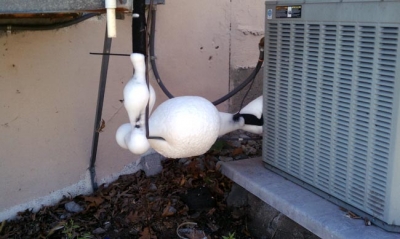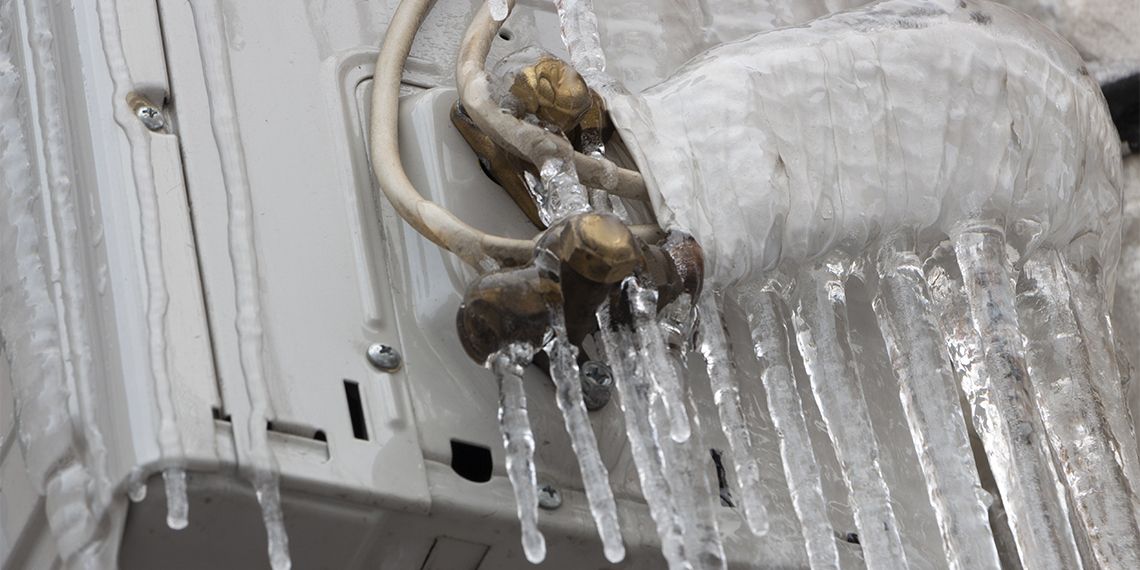Handling a Frozen AC Pipe: Proven Methods
Handling a Frozen AC Pipe: Proven Methods
Blog Article
This article following next about Why Is Ice On My Outside Air Conditione is particularly motivating. Don't overlook it.

Intro
Discovering that your AC pipe is frozen can be concerning, especially throughout warm summer season when you depend on your ac unit one of the most. Understanding what to do in such a scenario is vital to avoid more damage to your air conditioning system and ensure your convenience inside your home.
Recognizing the Causes
A number of variables can contribute to the cold of an AC pipe. Recognizing these causes can assist you resolve the issue successfully.
Absence of Airflow
One common reason for a frozen air conditioner pipeline is inadequate airflow. When the airflow over the evaporator coil is restricted, it can trigger the coil to go down below freezing temperature level, bring about ice development on the pipeline.
Low Refrigerant Levels
Inadequate cooling agent levels in your air conditioning system can additionally result in a frozen pipeline. Reduced cooling agent levels can trigger the pressure in the system to go down, bring about the freezing of wetness on the evaporator coil.
Cold Weather Conditions
In cooler environments, freezing temperatures outside can add to the freezing of AC pipelines. If your air conditioning unit is not appropriately protected or if there are leakages in the ductwork, cool air can infiltrate the system, causing the pipe to freeze.
Dirty Air Filters
Filthy or stopped up air filters can restrict airflow in your AC system, causing numerous issues, including a frozen pipe. It's necessary to replace or clean your air filters on a regular basis to make certain correct air flow and stop ice accumulation.
Indications of a Frozen Air Conditioning Pipe
Recognizing the indicators of an icy air conditioning pipe is critical for punctual action.
Reduced Airflow
If you see a considerable decrease in air movement from your vents, it might show a frozen pipeline.
Ice Buildup on the Pipe
Visible ice buildup on the cooling agent line or the evaporator coil is a clear indication of a frozen a/c pipeline.
Unusual Sounds from the Unit
Unusual audios, such as hissing or bubbling, coming from your a/c device can signify that there's ice present on the pipe.
Immediate Actions to Take
When faced with a frozen a/c pipeline, it's important to act promptly to stop more damages to your air conditioning system.
Switching off the air conditioner
The first step is to switch off your air conditioner to prevent the system from running and worsening the problem.
Checking for Blockages
Evaluate the location around the indoor device for any type of obstructions that might be blocking airflow, such as furniture or curtains.
Defrosting the Pipe
You can use mild techniques like placing towels taken in warm water around the frozen pipeline to help thaw it gradually.
Preventive Measures
Taking safety nets can assist avoid future incidents of a frozen air conditioner pipe.
When DIY Methods Fail
If your efforts to thaw the pipe or address various other concerns are unsuccessful, it's time to call in an expert.
Importance of Hiring a Professional HVAC Technician
A licensed HVAC professional has the know-how and devices required to identify and fix issues with your air conditioning system securely and properly.
Regular Maintenance Checks
Schedule routine upkeep get in touch with a professional HVAC technician to guarantee that your air conditioning system is running effectively.
Altering Air Filters
On a regular basis change or cleanse your air filters to avoid air flow restrictions and maintain optimal efficiency.
Shielding Exposed Pipes
If your a/c pipes are exposed to cold temperature levels, think about protecting them to prevent cold throughout winter months.
Looking For Professional Help
If DIY techniques stop working to resolve the concern or if you're not sure about just how to proceed, it's ideal to seek assistance from a certified HVAC technician.
Final thought
Dealing with an icy air conditioner pipe can be a discouraging experience, yet understanding how to react can help lessen damage and bring back comfort to your home. By recognizing the reasons, acknowledging the signs, and taking prompt activity, you can properly deal with the concern and stop future occurrences.
Frozen AC Line: Why It Happens & What To Do About It
A frozen AC line can be a rather peculiar sight in a place like Phoenix, Arizona where nothing ever freezes. In this post, we’ll discuss what makes an air conditioner line frozen – and what you can do about it.
Dirty Air Filters
Did you know that you should be cleaning or replacing your air filters on a monthly basis? Failing to do this can result in airflow issues that, in turn, cause your evaporator coils and lines to freeze over. You’ll notice a buildup of ice on both components, although the buildup on your pipes will, of course, be more evident unless you open your air condition up to reveal the coils.
What To Do About It
Give your air filter a good cleaning if it’s reusable. If not, replace the filter outright. Next, switch your air conditioner’s fan setting on and leave it there for 2-3 hours. This will draw warm air in, helping to thaw your evaporator coil. You can also check out this article for some tips on cleaning the coils themselves if you’d like to speed the process up. Before you switch the unit back to its normal state, make sure the supply vents are completely unobstructed and free of dust or other debris.
If you keep having this issue even after replacing your filters regularly, contact a local HVAC repair company and have them inspect your evaporator coil, ductwork, and any other components that may be at fault. If you live in the Phoenix, Arizona area, give American Home Water and Air a call.
Low Refrigerant Levels/Leakage
What To Do About It
Contrary to what air conditioner “recharge” companies often tell their clients about refrigerant, it should never need to be simply refilled. You see, refrigerant runs in what experts refer to as a “closed loop.” Refrigerant really shouldn’t be leaving that loop. If it is, you’ve got a leak.
Paying someone to come and pump more refrigerant into your system (aka “recharge” it) isn’t the solution. Doing that will simply kick the can down the road. Besides, refrigerant leaks can be harmful to the environment and people in your home.
Rather, you need to take care of the leak with the help of a technician. Check out this article for some more information about dealing with air conditioners that are leaking refrigerant. Before you contact a technician, switch your thermostat to the off position. Then, switch the fan setting on and let it run for 2-3 hours so the unit can thaw.
Improper Temperature Setting
Improper temperature settings can also cause a drop in your air conditioner’s pressure. What many people don’t realize is that air conditioners are actually designed to run when temperatures have fallen above roughly 60 degrees Fahrenheit. If you run the unit when it’s cold outside, you’ll run into many issues, including frozen components.

As a devoted person who reads about Why Is Ice On My Outside Air Conditione, I imagined sharing that piece of content was a great idea. Liked our blog posting? Please share it. Let another person check it out. I cherish reading our article about Why Is Ice On My Outside Air Conditione.
Book Now Report this page